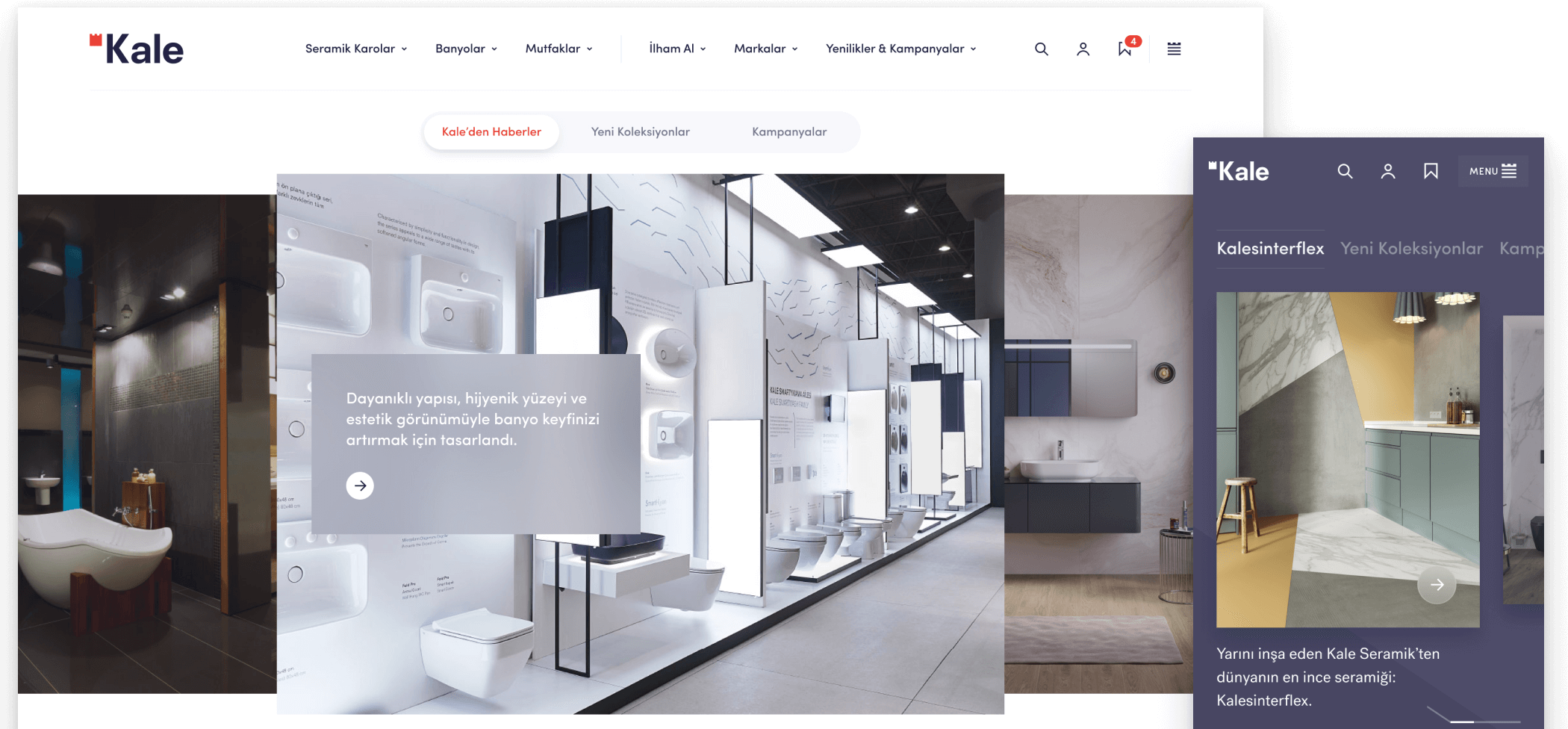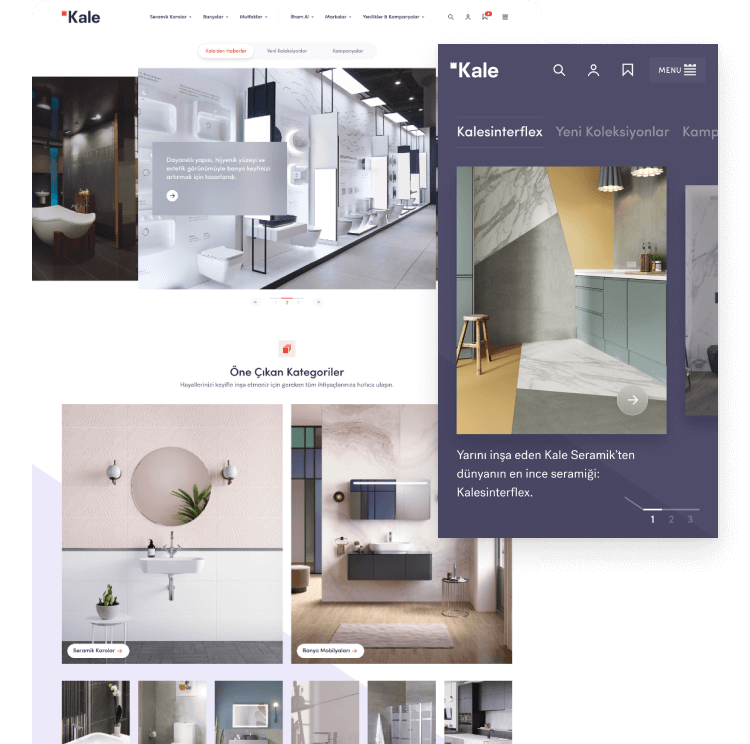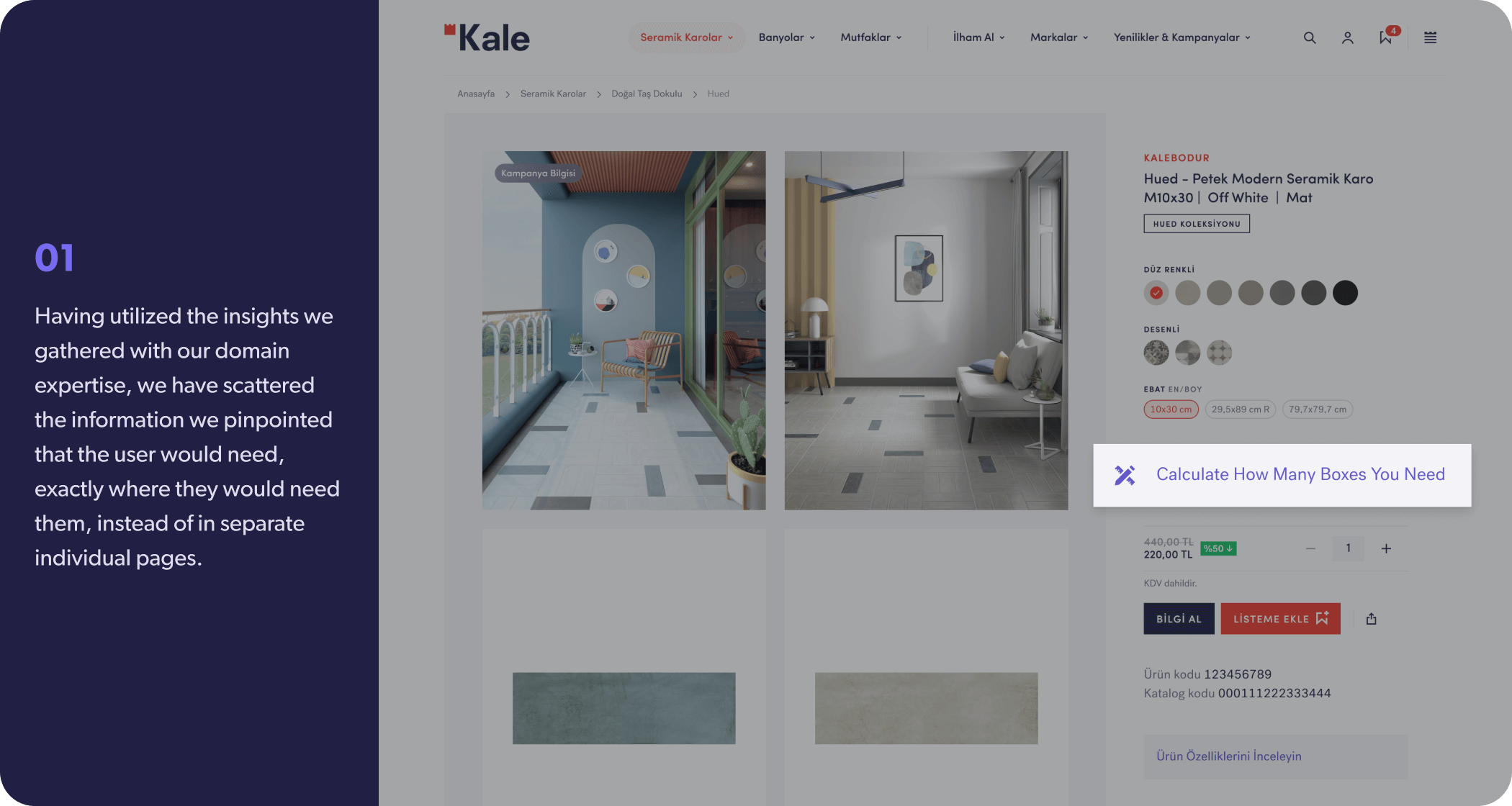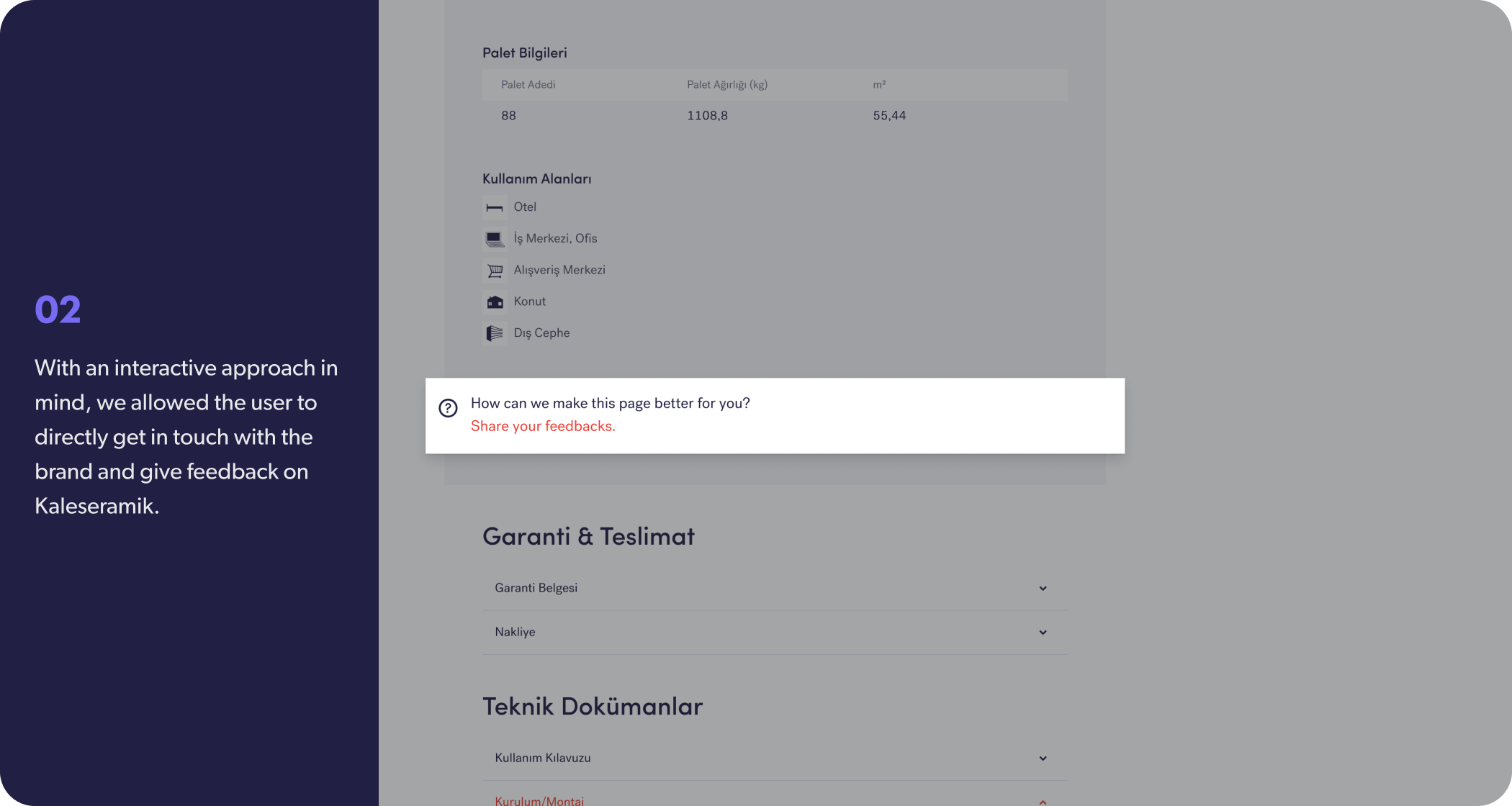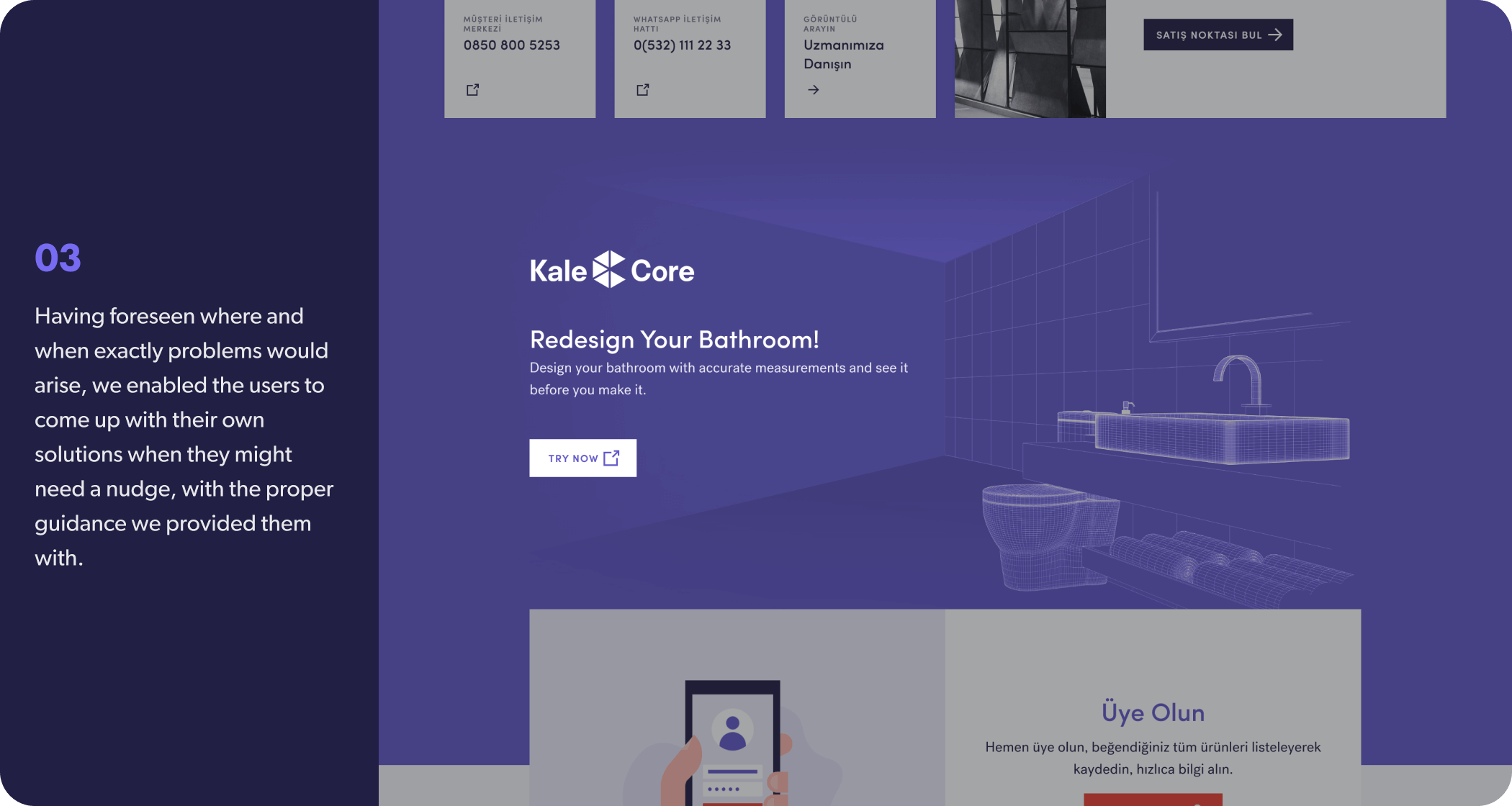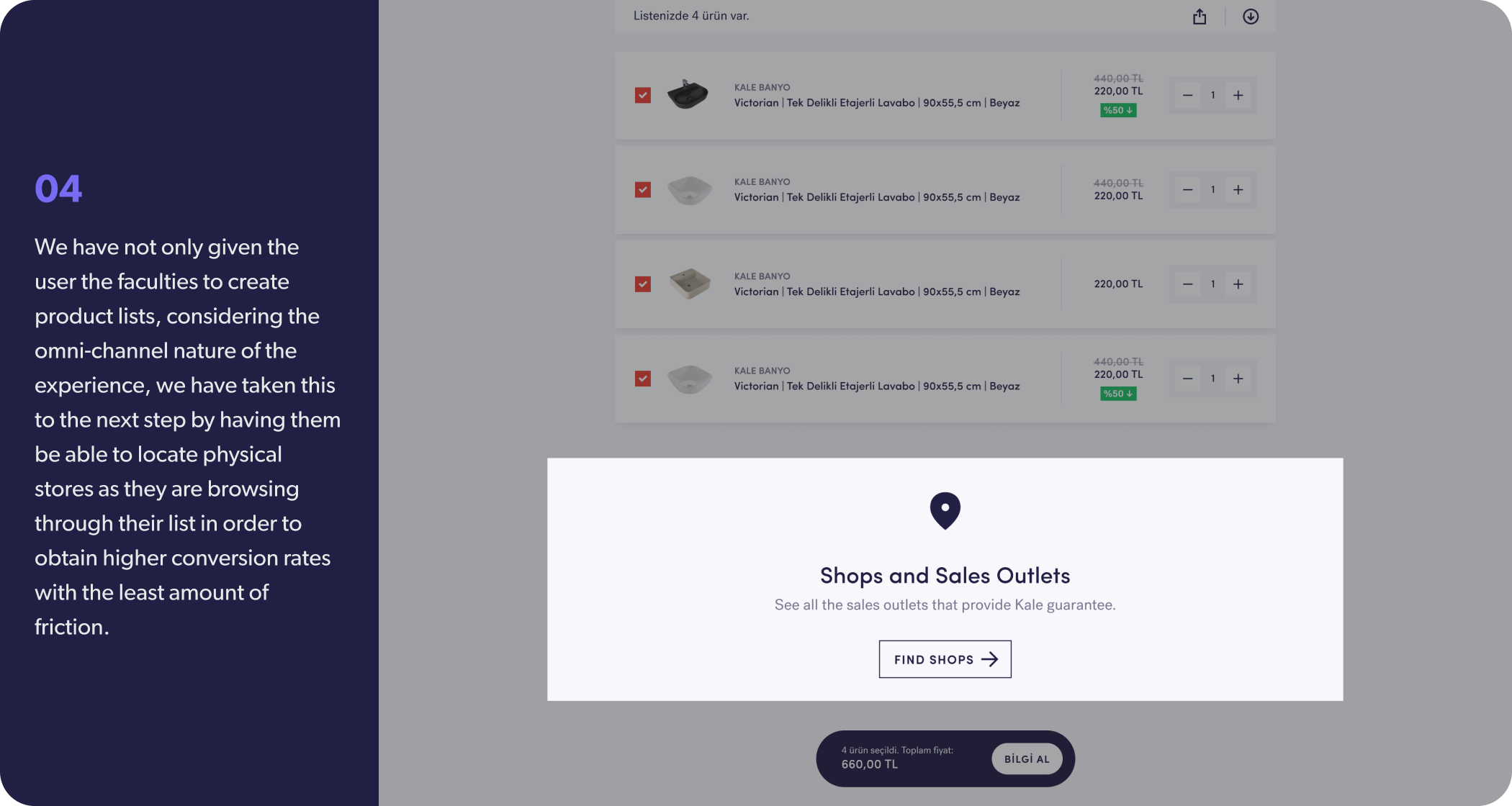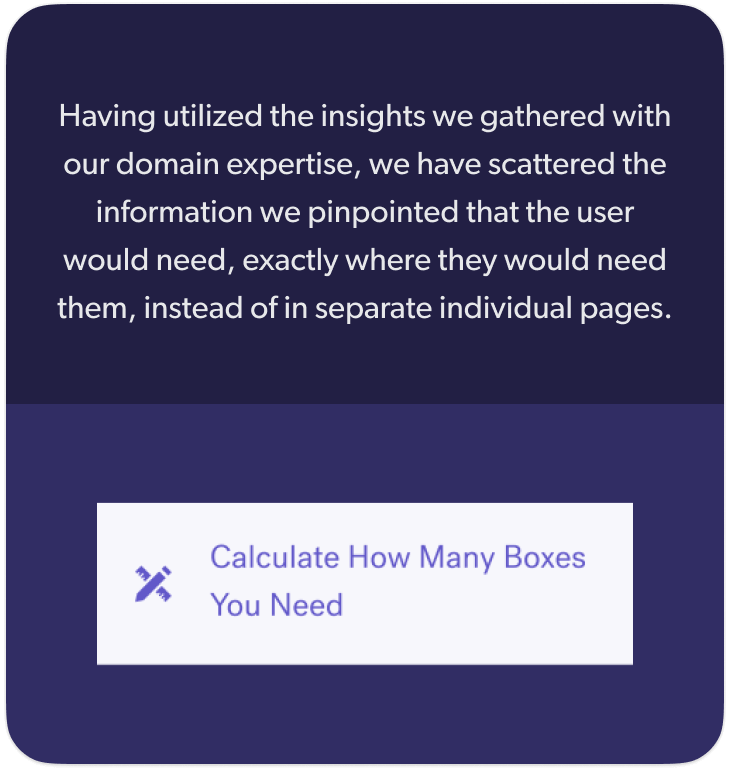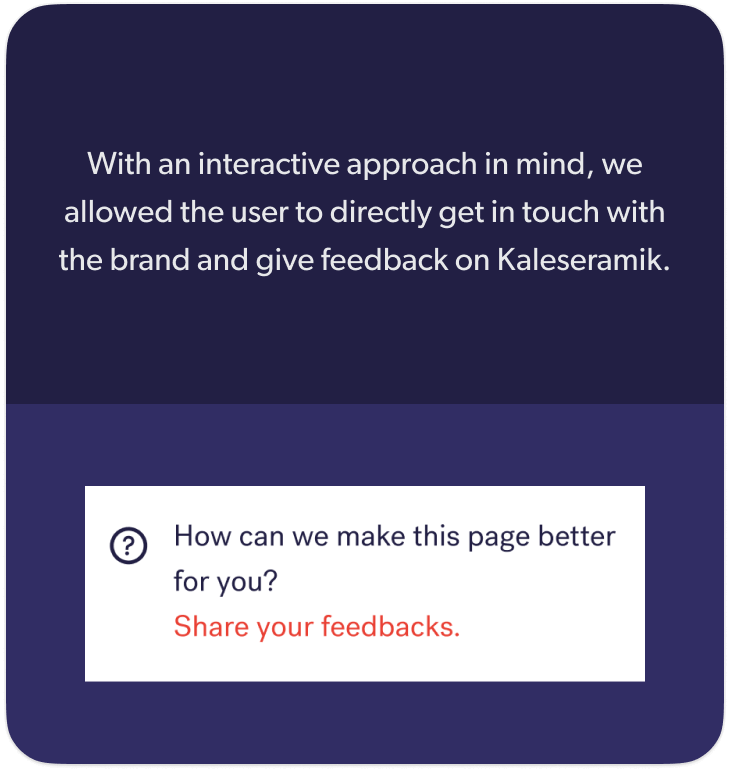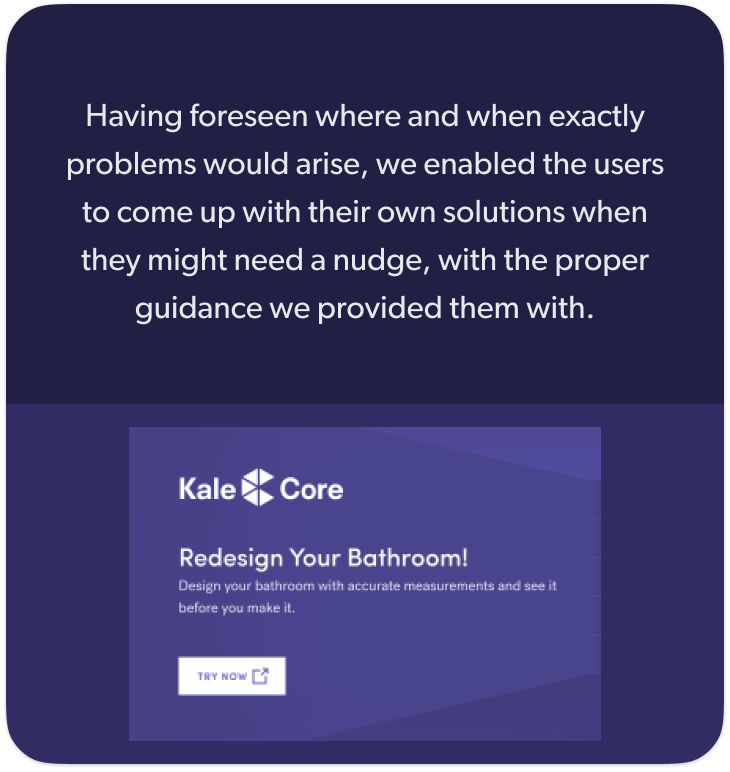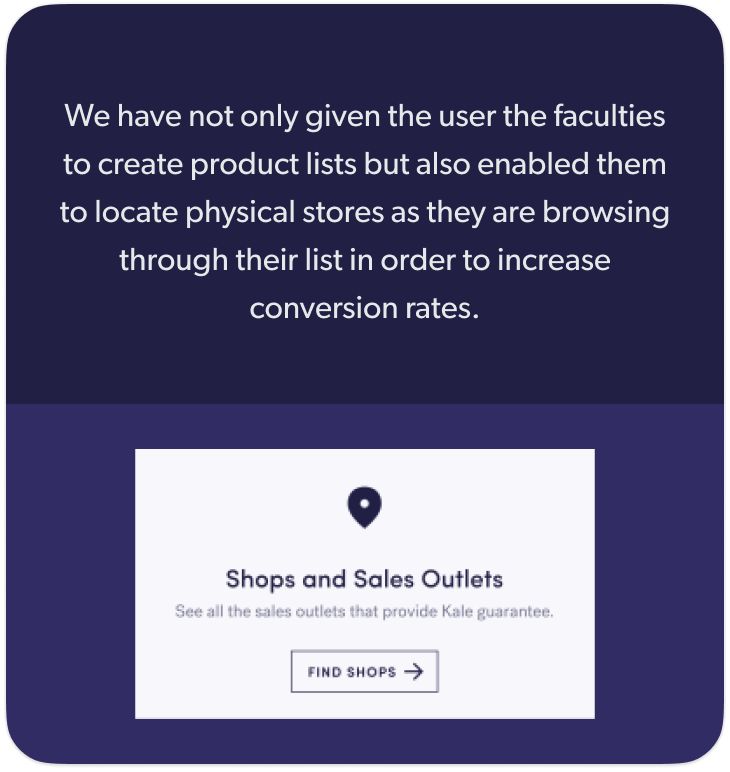About the project
We have designed an e-commerce based user-centered website for Kale Group, Europe’s 5th, World’s 15th biggest construction products manufacturer founded all the way back in 1957. Believe it or not, we have pulled this off all in remote capacity, not once having to hold a meeting in the physical. In other words, the conception and development of the new generation kale.com.tr experience was made possible with a cutting-edge understanding of project management & product development.
Goals
First and foremost, one of the most important goals of the project was that kale.com.tr needed to be redesigned into a user-centered e-commerce direction. To ensure that, we kicked off the project with a self-service experience design in mind where users would comprehend what actions they could take in the home page and reach the exact products or guidance they need from the get go. With this main goal in mind, we also added into our to-do list creative design solutions that would not only help customers position the brand where it was intended to be but also increase the Kale brand recognition

User Journeys
Knowing that designing a self-service experience requires actually knowing the customers and their needs, we rolled our sleeves onto analyzing existing personas and creating user journeys with an omni-channel approach, deciphering both physical and digital assets of the brand.
Even though with the pandemic our hands were tied when it came to getting our hands dirty and doing in-field research, we have conducted various online research activities such as an online survey in order to pinpoint users’ pain points & expectations and card sorting via online tools and softwares. Having utilized these alternatives, our journey towards obtaining insights -which to us are the must-haves of a user-centric approach- has remained unhindered.
Kaleseramilk - End User & B2B Personas
The user journey maps we created that were fueled by the insights gathered showed us that the expectations and behaviours of a user who intends to renew their bathroom and one who simply is browsing a single item were vastly different. While the main need of someone who is facing a complete do-over of their bathroom is inspiration, the user who is seeking to find a specific item is thirsty for easily finding what they are looking for and detailed product information. This has been a key insight that shaped the entire design of the user centered experience.
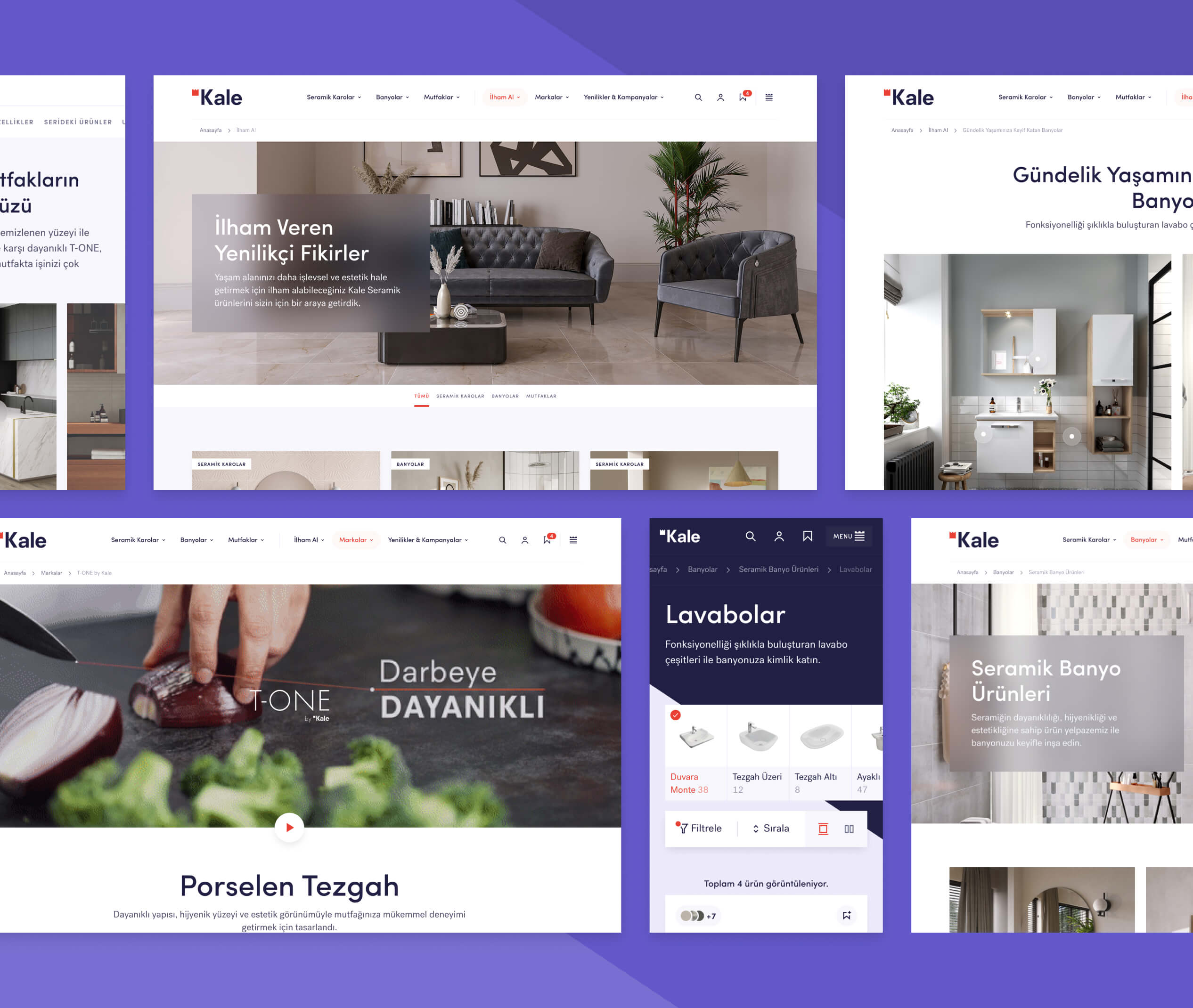
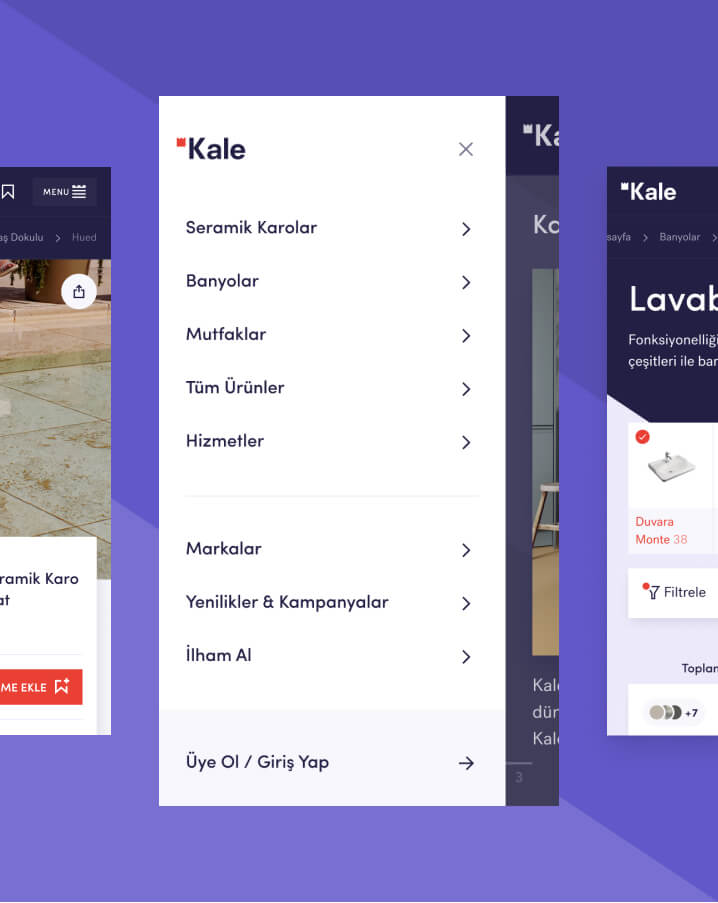
All-remote project management
Since the pandemic was a glowing reason why we couldn’t get together with the Kale or the development teams T&G Workshop in the physical sense, we acted proactively in order not to hit any road bumps due to this unavoidable global situation and came up with solutions in advance. We would like to think that we must have been successful at it since we have delivered all the interfaces before the due date with some of the forecasted project resources still in the tank!
Looking back, the main reason for this success has been finding the tools and approaches that these several teams in different locations could work together with, in harmony. What exactly have we done to make sure of it?
- We have drawn out exactly what each stakeholder is bound to be working on at each step of the project with the UX Roadmap led by SHERPA.
- We have conducted online user interviews in order to identify business needs together and to get to know the stakeholder ecosystem better.
- We have evaluated the insights from the discovery phase at the UX Strategy Workshop which was conducted online with 24 participants in three groups. Not only have we established our strategy but also identified the feature set geared for this strategy and broke it down into phases.
- Following the infrastructure preparation phase on the development side, SHERPA and T&G sat together in order to create a release plan to map out how we would package the deliverables and when we would dispatch them. This approach allowed the development teams to work in an agile way.
- Upon having started designing interfaces, we have facilitated bi-weekly design critique sessions with the intention of having every party and team member to stay aligned. We have not only taken the feedback from the product owner but also prioritized the technical restraints that the development team would share with us on the go.
 In addition to what is listed above
In addition to what is listed above

We have prototyped the screens on Figma which was also our main tool to present our designs and we have created an interactive guide specific for this project. This guide allowed us to showcase the interactions and animations just as intended, dodging the margin of error that comes with leaving some things to imagination
VIEW INTERACTIVE GUIDE For a better experience, open in desktop.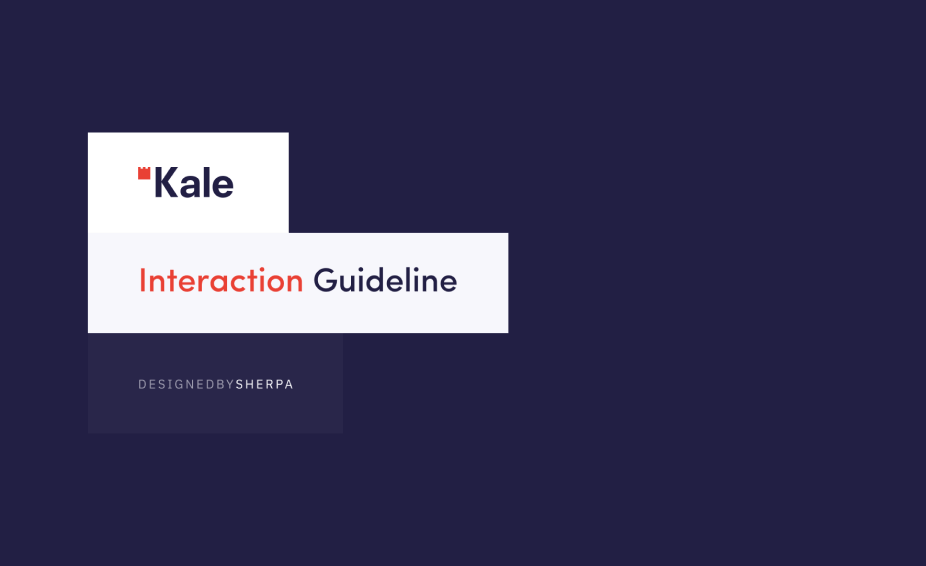

Pelin Özgen
Kaleseramik
Marketing and Corporate Communications Manager
During a difficult period like the pandemic, developing an experience project almost from scratch, in a structure where different departments such as marketing, communication, information technologies, product management, finance, sales, and multidisciplinary approaches are involved, in conditions where dozens of different people work from their homes, sounded like crazy. SHERPA Team made us believe that this change can be achieved with their project management approach and technologies that make them close, and on this occasion, we started our journey for a self-service Kale.com.tr experience.
SHERPA worked through meticulous and detailed plans to redesign our Kale.com.tr website. They provided our team with detailed reports at every stage, including the completion dates of all works and developments. With a regular calendar and agile working methodologies, we were informed at every step and became ready for infrastructure development processes.
Analyzing Kaleseramik personas with different types of users such as architects, dealers, masters and end users in the deepest way, understanding Kaleseramik and its dynamics as if they were a part of the team throughout the process, offering solutions and innovative perspectives that open us up at every step we stumbled upon, made our job much easier.
In addition to all these, they have not only justified us in this journey that we believe in, but also renewed our belief in the people of the country, their knowledge and self-sacrifice, by delivering the project with a success above expectations with their fine touches, guiding behaviors through successful examples at the global level, and positive perspectives, by adhering to the principles in experience design.
 TR
TR
